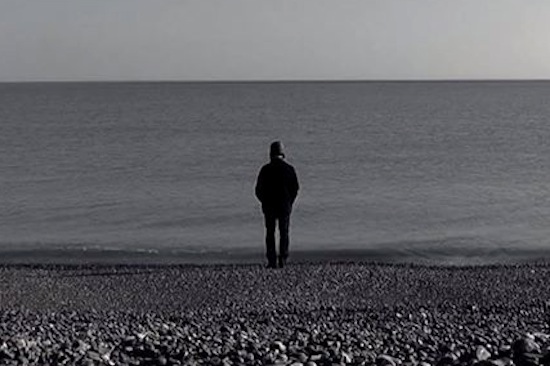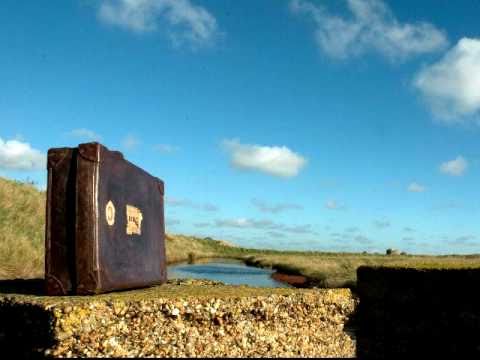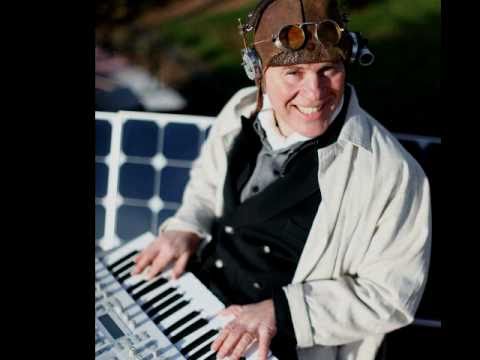As recently conjectured by Mark Fisher’s audio-essay On Vanishing Land, the Suffolk coastline is a haunted landscape, littered with the relics of past conflicts, awash with ghosts and subject to the ever-intensifying erosion of the tides. Electronic music pioneer Thomas Dolby is intimately acquainted with the strange magic of the place, having spent a sizeable portion of his childhood under its spell. This week Dolby commences an extensive UK tour, performing the live soundtrack to his new film, The Invisible Lighthouse. This highly personal work was inspired by the closing of Orford Ness lighthouse, whose beam has illuminated the shingles since 1792. “It’s a love letter to this part of England,” explains Dolby, who moved from California back to Suffolk in the latter part of the last decade. “It’s not the picture postcard England that we usually export to the rest of the world. It’s a fairly bleak place, and it has this eerie atmosphere. East Anglia is always the frontline when there’s an invasion threatening, so there are lumps of concrete dissolving into sand, bits of barbed wire and tank tracks that act as a constant reminder. I really love it. I feel the strongest affinity to here, really, and even when I moved to the States, I had a house here and would bring my family every summer, so it’s almost like a second home to them.”
On his return to East Anglia, Dolby set up studio in a solar and wind-powered 1930s lifeboat christened The Nutmeg Of Consolation. Here, docked on the very edge of England, he recorded his first album of original material for almost 20 years, A Map Of The Floating City. “The album really absorbed the atmosphere,” he says. “I was immersed in it, surrounded by it, 360 degrees.” The album’s East Anglian influence is felt most strongly on the two compositions that close the album. Both ‘Oceanea’ and ‘To The Lifeboats’ are elegies; the former for Dolby’s late mother, the latter for a future England finally engulfed by the waves. The themes of erosion and loss similarly inform The Invisible Lighthouse. “I can see Orford Ness Lighthouse from the Nutmeg,” says Dolby, “and it would flash on my wall as I fell asleep when I was a kid. My memories of my childhood here are so wrapped up in that thing, so I was really distraught to find out that they were closing it down, and there was really no point in trying to mount any resistance because it’s actually a danger. It can’t even be moved the way some lighthouses are because the shingle on Orford Ness is so soft and fluid. I was really upset, it felt like a chapter of my life was closing down.”
Meanwhile, the landscape around Dolby’s lifeboat was changing in other, more positive ways. “The biggest windfarm in Europe is being built just on the horizon, which I can also see from the Nutmeg. So my binoculars have been trained on that and all the strange metals going in and out. There’s something very gratifying about having a windfarm on the horizon when I wrote the song ‘Windpower’ in 1980. Philosophically, that lighthouse has been there since 1792, so on a certain level I’m just a blip on its radar and perhaps I should just let it go [laughs] That was my feeling about it.”
This didn’t last long, however. Dolby had been experimenting with technology that would enable him to transform his feelings of loss into new work. “I started to film out and about from my home using these fantastic bits of video kit that you can get nowadays, which in some ways have very little disadvantage over what in the past would have required a crew and a big budget. I was having a lot of fun with that and with gizmos like a quadracopter camera that I can fly with my iPhone, GoPros on sticks that make it look like you’ve got a SteadiCam operator following you around, and great editing software on laptops. I’m like a kid in a toy shop with all this new technology and I’ve got a lot more energy in some ways for exploring a new medium than one like music and MIDI that I’m all too familiar with. Themes seemed to be emerging and they all seemed to be linked to the lighthouse. The lighthouse is a convenient fulcrum for all of these things. Like, for example, the Rendlesham Forest UFO sighting…”
In the early hours of December 26, 1980, security staff at RAF Woodbridge reported unusual lights descending into nearby Rendlesham Forest. Servicemen sent to investigate reported a glowing metallic object with unfamiliar symbols on its surface. Marks were still visible on the ground the next day. The incident ranks alongside the Warminster visitations as one of the UK’s greatest unsolved UFO mysteries. “It’s known as the British Roswell. Sceptics say that the witnesses were probably a bit stoned and what freaked them out in the woods was actually the beam from the lighthouse mixed with some odd weather conditions and possibly an ejected stage from a Russian rocket. But if you’ve looked at the Orford Ness lighthouse recently, it’s a puny little flash, nothing that anybody could confuse with a flying saucer. Yet what I remember from my childhood was this great sweeping beam across the landscape, lighting up the sky.”
This dissonance gave Dolby pause for thought. “I’m beginning to wonder whether in fact I created that memory. Whether the beam was always that puny. The UFO witnesses, the servicemen that now tour the world talking about experiences that seem to get more and more extreme each year… y’know, cynically you could say they command higher fees on the lecture circuit these days so they have to sensationalise. But the flipside is that memory actually is a very fragile thing and we are actually able to trick ourselves into remembering things differently and replaying pictures in our mind as if they are from memory, when in fact they’ve been influenced by our imagination and the way the story has grown over time. So it made me question a lot of my own childhood memories and wonder what was real.”
This tension between the real and the imagined has long been characteristic of Dolby’s songwriting. Indeed, since his 1982 debut The Golden Age Of Wireless he has been mapping out an alternate universe constructed from fragments of past, present and future, truth and fiction. This virtual world, in which human drama plays out against a vast backdrop of global turmoil, might be termed "the Dolbyverse". “I think the Floating City game did that,” says Dolby, referring to the online role-playing game which accompanied his most recent album. “It was partly influenced by my audience. In the Flat Earth forum, people would take names from characters in my songs, like Europa [from ‘Europa And The Pirate Twins’] or Lizzy [from ‘Weightless’] or whatever. They would even write their own little scripts using characters from the songs, and people loved it when there were recurring themes. So before I was aware of it, my fans were starting to knit this mythos together.”
Even without the involvement of his fans, there is a clear line to be drawn from the psychogeographical synthpop of 1982 to projects such as The Invisible Lighthouse. “I think as you get into middle age you tend to look back on your achievements and try and make sense out of all of them,” says Dolby. “Even when there was a period in the 80s when there didn’t appear to be much of a link between everything that I was doing. But with my most important work, my solo work, the stuff I’ve loved doing with Prefab Sprout and so on, I think there’s definitely a continuum.”
Thomas Dolby’s tour starts September 10; for full details click here





